Faced with declining water availability and soft commodity prices, Noel and Jan McMahon from the Riverina district turned their business emphasis from farming to beef production. To do this, Noel and Jan purchased western country suitable for a breeder herd, allowing them to use the more productive country around their home base for growing young cattle to supply the feedlot market.
The breeding block was located 200km west of Bourke and a long way from home, making livestock supervision difficult and labour intensive. Managing the remote locality was more challenging with dry conditions and boggy ground tanks requiring regular inspection.
Confronted by these challenges, Noel and Jan decided to seek a permanent solution to their problems that would allow:
- Better feed utilisation;
- Increased carrying capacity; and
- Decreased stock losses.
One option available to the McMahons was expanding existing dams; however, this proved to be prohibitively expensive, due to the remoteness of the country, and potentially ineffectual due to typically low rainfall.
Instead, Noel and Jan decided to install tanks and troughs in four main locations around the property using pipelines and pumps to transfer water. The improved positioning of watering points enabled more efficient utilisation of grazing land which subsequently improved the carrying capacity of the country.
The remoteness of the property did, however, remain a significant issue for the McMahons who were managing the enterprise from the home base 1,000 kilometres away. While a neighbour was hired to run regular inspections, the McMahon’s still had to spend a significant amount of time (26% of their available time per year, as shown in the above slideshow) travelling to and from the breeding property, primarily to manage water. Overall, Jan estimates about $12,000 per annum was spent purely on manual management of water including travel time. Despite their best efforts, they still ran into water problems and production losses.
Remote monitoring
The solution came through the installation by Darling Irrigation of Observant remote monitoring technology. This enabled Noel and Jan to manage the water level in each of the four key watering points from their home base in the Riverina, 1,000km away.
With these units, the McMahons could estimate the number of head drinking at troughs by analysing data from the flow meters. Pumps and associated electricity supply are monitored via pressure sensors making it possible to find faults and shut down the system before any damage occurs.
Installation of the Observant remote monitoring equipment together with two 22,000 litre tanks and four troughs in the adjacent paddocks was undertaken by Darling Irrigation’s trained and professional staff who specialise in all aspects of stock watering systems. As Noel and Jan pointed out, “Being able to deal with one company for everything added to the ease of the project”.
At each location an Observant C2 unit was mounted to the top of one of the poly tanks. The C2 unit monitors the level in the tanks with a L1 level sensor. The flow rate to each paddock is monitored by an inline pulse output water meter cabled back to the C2 unit.
The water source or bore is central to the four watering points with C2 units monitoring pipeline pressure, tank level and flow. A base station is situated at the homestead which collects data from the individual field units via UHF. This is relayed over the internet to be viewed anywhere in the world.
Two-year return on investment
Jan expects the return on investment for the installation to be inside two years saying “The $22,000 spent on the units would be recovered in two years as the cost of wages and travel amounted to nearly $1,000 per month”. The cost of owning and running the monitoring system works out to be less than $220 per month.
The system itself is easy to install, understand and operate.
There is no requirement for a computer at the base as the unit communicates directly via modem. All field units operate on solar power and have battery backup for days of low sun. The McMahons choose to receive water level information every 10 minutes; however, the update time is customised to suit individual requirements. The next step for the McMahon’s is to install cameras at the watering points, supported by the same technology, to operate as their “eyes on the ground”.
Increasing efficiency, improving cash flow
The Observant remote monitoring system has ensured the McMahons livestock have ample water despite being managed from 1,000km away. Other positives include increased stocking rates, better utilisation of pastures and reduced labour inputs. This all contributes to improved productivity and cash flow.
If you’re interested in increasing water efficiency and improving cashflow with remote stock and water monitoring, contact Darling Irrigation.


 An irrigation system helping to understand climate change
An irrigation system helping to understand climate change

